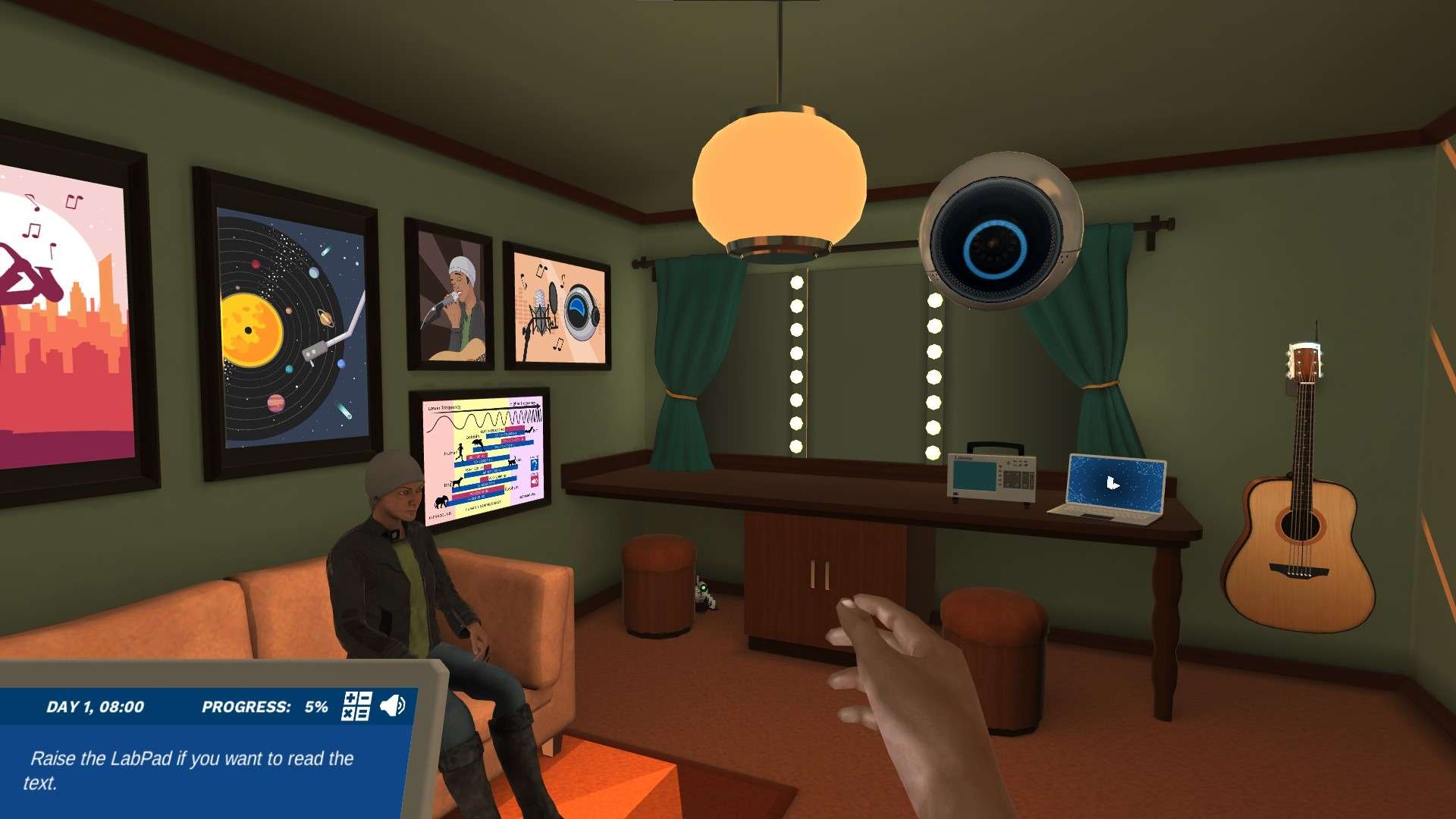Heading 1
Heading 2
Heading 3
Heading 4
Heading 5
Heading 6
Lorem ipsum dolor sit amet, consectetur adipiscing elit, sed do eiusmod tempor incididunt ut labore et dolore magna aliqua. Ut enim ad minim veniam, quis nostrud exercitation ullamco laboris nisi ut aliquip ex ea commodo consequat. Duis aute irure dolor in reprehenderit in voluptate velit esse cillum dolore eu fugiat nulla pariatur.
Block quote
Ordered list
- Item 1
- Item 2
- Item 3
Unordered list
- Item A
- Item B
- Item C
Bold text
Emphasis
Superscript
Subscript
About This Simulation
Ride the Shrink-o-Ship to see a propagating sound wave up close while learning about the production, propagation, and detection of sound. Experiment with the properties of a sound wave and use your newfound knowledge to help a rock star tune their guitar!
Learning Objectives
- Recognize that sound is a wave and link its generation, propagation, and detection to vibrations and changes in pressure
- Describe how the speed of a sound wave depends on the medium through which it travels and use v=f𝜆 to predict the change in wavelength as it passes from one medium to another
- Relate pitch and loudness to frequency and amplitude using the graphical representation of a sound wave
About This Simulation
Lab Techniques
- Sound as a wave
- Production of Sound by vibrating objects
- Propagation of sound through different media and how this affects speed/wavelength
- Detection of sound by the ear
- Pitch and loudness of sound
Related Standards
- HS-PS4-1
- PS4.C-H1
Learn More About This Simulation
Can you hear me over the sound of all this knowledge? In this simulation, you will learn that sound is actually a pressure wave! You will explore how sound is produced by vibrating objects, how it propagates through different media, and how it is detected by your ears. By experimenting with the frequency and amplitude of a sound wave, you will discover what affects the pitch and loudness of the sound that you hear. Using this information, you will then help a musician to tune their guitar just before their concert starts.
What is Sound?
Shrink down to one-fiftieth of your regular size and hop in the Shrink-o-Ship to see a propagating sound wave up close! Watch as a vibrating guitar string creates a sound wave in the surrounding air particles; follow it as it passes through a solid medium and observe its speed and wavelength change; then discover how it interacts with and is detected by your ear. Dr. One will explain each step and test your understanding while you enjoy the show.
Properties of a Sound Wave
Freely experiment with the frequency and amplitude of a sound wave and listen to how this affects the pitch and loudness of the sound in real-time. You can’t learn about sound without things getting noisy!
Tune the Guitar!
Your favorite rock star has lost their digital tuner and needs your help to get the guitar tuned in time for the concert! Luckily, you can use your newfound expertise on sound waves to operate the Labster Universal Tuner. For each string, listen to and compare the pitch, loudness, and waveform of the sound produced to that of the desired reference note then adjust the frequency and amplitude to bring it back into tune. The clock is ticking; can you
For Science Programs Providing a Learning Advantage
Boost STEM Pass Rates
Boost Learning with Fun
75% of students show high engagement and improved grades with Labster
Discover Simulations That Match Your Syllabus
Easily bolster your learning objectives with relevant, interactive content
Place Students in the Shoes of Real Scientists
Practice a lab procedure or visualize theory through narrative-driven scenarios


FAQs
Find answers to frequently asked questions.
Heading 1
Heading 2
Heading 3
Heading 4
Heading 5
Heading 6
Lorem ipsum dolor sit amet, consectetur adipiscing elit, sed do eiusmod tempor incididunt ut labore et dolore magna aliqua. Ut enim ad minim veniam, quis nostrud exercitation ullamco laboris nisi ut aliquip ex ea commodo consequat. Duis aute irure dolor in reprehenderit in voluptate velit esse cillum dolore eu fugiat nulla pariatur.
Block quote
Ordered list
- Item 1
- Item 2
- Item 3
Unordered list
- Item A
- Item B
- Item C
Bold text
Emphasis
Superscript
Subscript
A Labster virtual lab is an interactive, multimedia assignment that students access right from their computers. Many Labster virtual labs prepare students for success in college by introducing foundational knowledge using multimedia visualizations that make it easier to understand complex concepts. Other Labster virtual labs prepare learners for careers in STEM labs by giving them realistic practice on lab techniques and procedures.
Labster’s virtual lab simulations are created by scientists and designed to maximize engagement and interactivity. Unlike watching a video or reading a textbook, Labster virtual labs are interactive. To make progress, students must think critically and solve a real-world problem. We believe that learning by doing makes STEM stick.
Yes, Labster is compatible with all major LMS (Learning Management Systems) including Blackboard, Canvas, D2L, Moodle, and many others. Students can access Labster like any other assignment. If your institution does not choose an LMS integration, students will log into Labster’s Course Manager once they have an account created. Your institution will decide which is the best access method.
Labster is available for purchase by instructors, faculty, and administrators at education institutions. Purchasing our starter package, Labster Explorer, can be done using a credit card if you are located in the USA, Canada, or Mexico. If you are outside of North America or are choosing a higher plan, please speak with a Labster sales representative. Compare plans.
Labster supports a wide range of STEM courses at the high school, college, and university level across fields in biology, chemistry, physics, and health sciences. You can identify topics for your courses by searching our Content Catalog.















